| Columns Retired Columns & Blogs |
Thank you for reviewing it!
The Pro-Ject Phono Box RS2 phono preamplifier is a very complicated product. It has balanced and single-ended inputs; balanced and single-ended outputs; four different voltage gain settings and multiple choices for capacitive loadings in MM mode; four different gain settings and continuously variable input impedance in MC mode; and standard switch-mode and upgrade linear power supply options. I performed a complete set of measurements with my Audio Precision SYS2722 system (see the January 2008 "As We See It"), using the balanced input and output with the preamp set to MM, maximum gain, 50pF input capacitance, and powered by the hefty RS Uni linear power supply. (This was placed as far away from the preamplifier chassis as the umbilical cable would allow.) I then repeated some tests in both MM and MC modes at different gains and via the unbalanced inputs and output, using both the linear power supply and the standard supply.
All the Phono Box's inputs and outputs preserved absolute polarity in both MM and MC modes. The input impedance in MM mode is specified as 47k ohms. I measured 46k ohms at 20Hz and 1kHz for both balanced and unbalanced inputs, dropping to 41k ohms balanced and 31k ohms unbalanced at 20kHz. In MC mode, the input impedance with the rotary control set to "10" was 13 ohms. With the control set to "200," the impedance was 185 ohms; set to "400," it was 360 ohms; set to "600," it was 640 ohms; and set to "1000," it was 1001 ohms. All the measured input impedances in MC mode were the same from 20Hz to 20kHz for balanced and unbalanced inputs. The balanced output impedance was a fairly low 438 ohms, and the unbalanced output impedance was 218 ohms independent of frequency between 10Hz and 20kHz.
The manual states that the voltage gain in MM mode can be set to 40dB, 43dB, 46dB, and 50dB; I measured 40.3dB, 43.4dB, 46.3dB, and 50.25dB at 1kHz for balanced input to balanced output, unbalanced input to balanced output, and unbalanced input to unbalanced output. The gain in MC mode is specified as 60dB, 63dB, 66dB, and 70dB; I measured 60.3dB, 63.35dB, 66.4dB, and 70.3dB, again at 1kHz and for all combinations of input and output.
The RIAA correction was superbly accurate, with excellent channel matching (fig.1, blue and red traces). With the subsonic filter engaged, the response rolled off sharply below 50Hz, reaching –3dB at 22Hz (cyan and magenta traces). Switching the RS2's deemphasis curve from RIAA to Decca gave a response with an RIAA-preemphasized signal that shelved down in the treble (green and gray traces, offset by –1dB for clarity). Channel separation was superb, at >90dB in both directions below 2kHz and still 75dB at the top of the audioband.
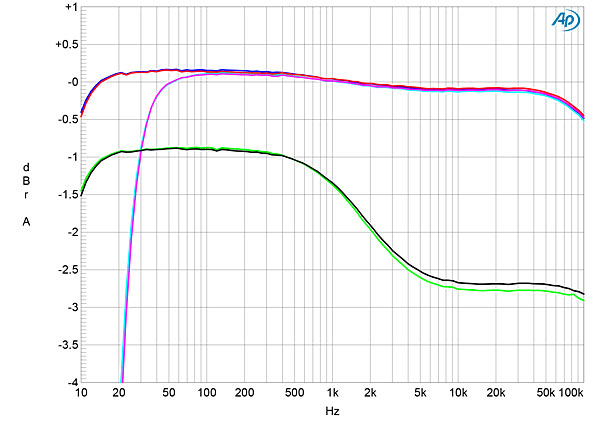
Spectral analysis of the Pro-Ject's low-frequency noisefloor with the preamplifier set to MM and maximum gain (fig.2) indicated that random noise components were low in level and power supply–related spuriae were absent. The blue and red traces were taken with the linear power supply, the cyan and magenta traces with the standard supply. There were no differences in the noisefloor. The Phono Box RS2's unweighted, wideband S/N ratio, measured in MM mode with the unbalanced input shorted to ground, was a very good 76.7dB in both channels, referred to an input signal of 1kHz at 5mV. Restricting the measurement bandwidth to 22Hz–22kHz increased the ratio to 79.7dB, while switching an A-weighting filter into circuit increased the ratio to 83.5dB. While the S/N ratios in MM mode didn't vary with the gain setting, in MC mode the S/N ratios depended on the gain that had been selected. With the lowest gain, the S/N ratios were 62.4dB (unweighted, wideband), 64.4dB (22Hz–22kHz), and 70.2dB (A-weighted), these all referred to an input signal of 1kHz at 500µV. With the MC mode set to the highest gain, the ratios reduced to 54dB, 55.5dB, and 62dB, respectively, but this is still a relatively low level of noise.
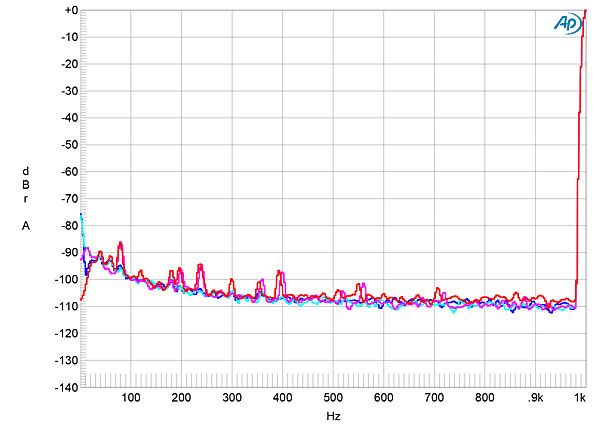
The Pro-Ject preamp's overload margins were affected by the gain setting. In the best case, minimum gain in both MM and MC modes, the margin was a superb 32dB at 20Hz and 1kHz, dropping to 20dB, MM, and 28dB, MC, at 20kHz. (The MM margin is referred to 1kHz at 5mV, the MC margin to 1kHz at 500µV.) With the gain set to the maximum, the overload margin in both modes was a still very good 22.5dB at 20Hz and 1kHz, dropping to 20dB at 20kHz. These margins were calculated from when the THD+noise percentage reached 1% and are equivalent to the Phono Box RS2's output level reaching 20V RMS!
Distortion was very low. In MM mode set to maximum gain and with a 50Hz signal 6dB higher than the nominal MM reference level (fig.3), the only harmonics visible above the noisefloor were the second at –83dB (0.007%) and the third at –87dB (0.004%). This graph was taken with the linear power supply; the distortion spectrum was similar with the standard supply (fig.4). When I repeated these spectral analyses with 1kHz at the same level, I got even lower levels of distortion. With the linear power supply, the second harmonic lay at –101dB (0.001%) in the left channel (fig.5, blue trace) and at –110dB (0.0003%) in the right channel (red trace), and the third harmonic has disappeared. However, the high-frequency noisefloor is higher in level than I was expecting. (The RIAA deemphasis should result in a noisefloor that gently slopes down as the frequency increases.)
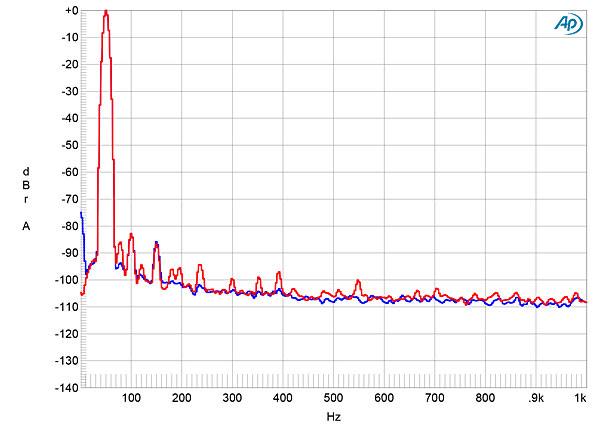
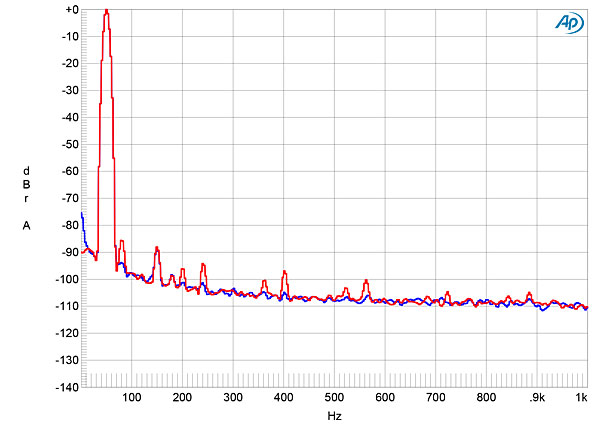
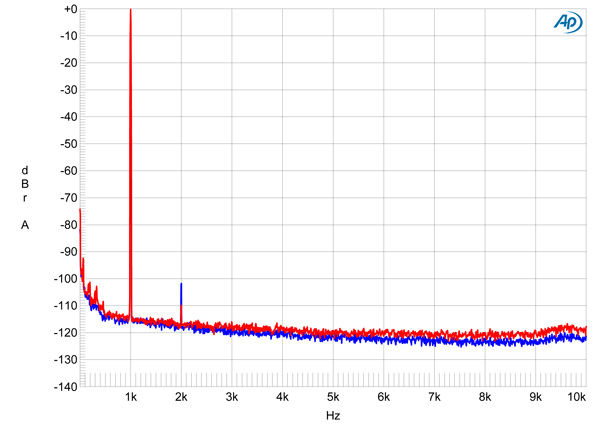
Grounding the signal generator's XLR pin 1 (footnote 1) didn't change the result. However, when I repeated the spectral analysis with the Phono Box powered by the standard supply, the second harmonic dropped to –114dB (0.0002%), and the higher-frequency noisefloor was both cleaner and correctly sloped down with increasing frequency. Only when I increased the level of the input signal by 6dB (1kHz at 20mV) did the third harmonic make an appearance (fig.5), but the second harmonic was still lower in level in both channels with the standard supply than they had been at the lower input level with the linear supply.
Intermodulation distortion with an equal mix of 19kHz and 20kHz tones, at a peak input level equivalent to 1kHz at 10mV, was also extremely low in level. The second-order difference product at 1kHz lay at –87dB with the linear supply (fig.6) and at –97dB with the standard supply (not shown).
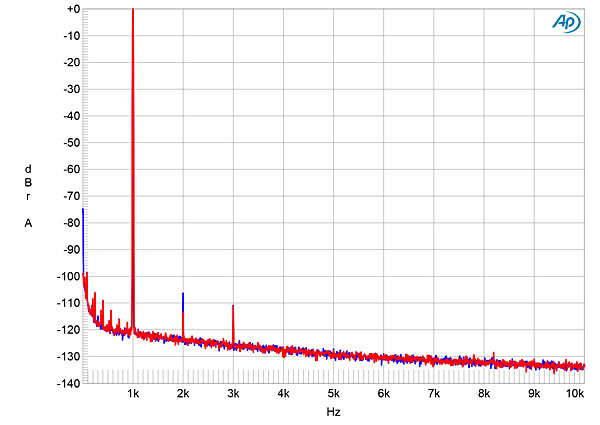
Figs.5, 6, and 7 were taken with the RS2 driving the 100k ohm load. Reducing the load impedance to a current-demanding 600 ohms resulted in waveform clipping. The Pro-Ject Phono Box RS2 must be partnered by line preamplifiers offering an input impedance of at least 10k ohms.

Its performance on the test bench reveals that Pro-Ject's Phono Box RS2 is a well-engineered phono preamplifier. Both distortion and noise are very low in level, and its wide range of cartridge-matching options is commendable, as is the fact that the power supply connection uses a high-quality mini-XLR plug. However, I was puzzled both by the increase in distortion (albeit to still very low levels) and the shape of the higher-frequency noisefloor with the optional linear power supply. The only explanation I can think of is that the linear power supply is susceptible to RF interference.—John Atkinson


Thanks for reading, Anton. It was my pleasure (as you might have guessed). Wish I still had it here. ;-)

Are there any plans for reviewing it?
https://teac.jp/int/product/pe-505/top
https://www.lowbeats.de/test-teac-pe-505-symmetrische-phonovorstufe-fuer-mm-und-mc/

Hi
It is a real bargain:$1,999 for an Austrian built MM/MC fully in/output balanced dual-mono phono-preamp.
What impressed me most is the use of discrete active devices only & PASSIVE RIAA EQ !!!!. This shows the Austrian designer(s) knows music as much as the preamp design. Austria (ie: Vienna, classical music capital for the world for centuries, no wonder!".
Yes, passive RIAA EQ sounds so much better than the conventional NFB loop EQ used in most most commercial photostages available in the marketplace irrespective of selling price. Ny experience.
Only 'booboo' this preamp designer made, IMO, is the use of switching power supply BUILT-IN on the same circuit board ! To save manufacature cost, I guess.
IMO, NO repeat NO switching electronics should ideally ever be used in any phono-linestages. It will simply impair the sonic musicality.
Glad Pro-jet knows making it up with an outboard linear (non-switching) power supply with additional cost of $800.
Yes, power supply of a preamp is so so crucial for its sonic performance particularly when MC is involved.
FYI, my factory-matched headamp for my moving coil cartridge (both made in Japan) is a single-ended Classs-A fully symmmetric OTL push-pulll topology using discrete solidstate devices, powered by +/- D-size batteries. Only batttery power supply can assure no PS rippling noise & ground induced noise. Period. The sonic reward is: to say the least - very dark quiet music background.
Likewise, I've used a huge battery 'reservoir' to power the 6.3V heaters of the triodes used in my design/built phonostage+linestage.
Passive no-NFB-loop RIAA EQ for best sound, absolutely.
Listening is believing
Jack L

Doing a review of a truly balanced phono preamplifier like the Pro-Ject Phono Box RS2 I would expect that the reviewer at least is capable of meeting the criteria for that specific product and being able to supply the needed balanced phono signal, not just a single wired RCA signal path whatever that path might cost. The reviewer says: "My tonearms have RCA cables, so, although I did try the balanced XLR inputs with adapters, I wasn't able to explore the Pro-Ject's "ideal" fully balanced operation (footnote 1)."
Reviews are some times deepened by a "follow-up". Can You supply a "follow-up" with "fully balanced" contributions and with the Power Supply UNI 4.
Comprehensive is comprehensive.

Thank You Tom Fine for unveiling some of the methods You as a producer use in order to assess the end result of Your efforts. I own CD Box RS2 T and Power Box Uni 4-way and am going to acquire a phono preamp. No doubt this will be it.